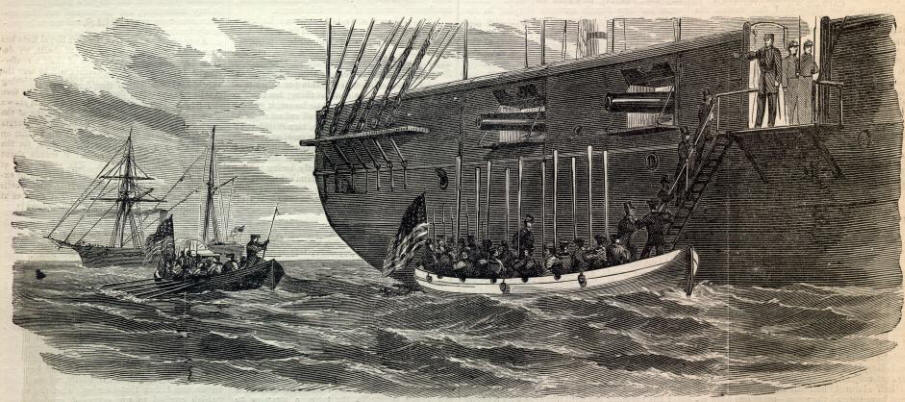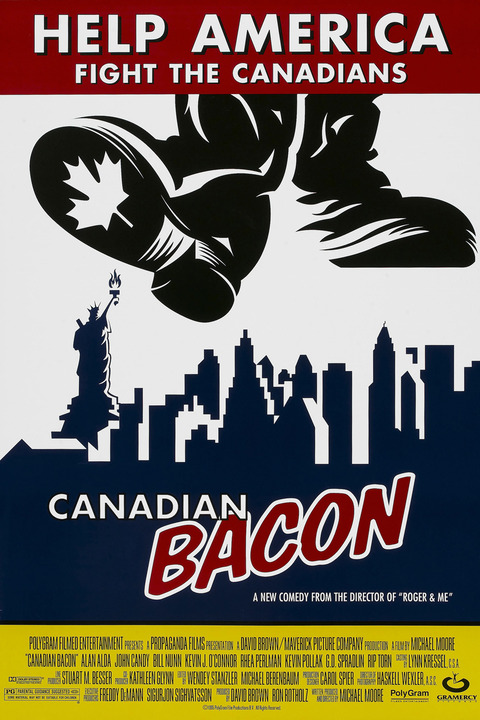It’s the plot of comedy movies and grand
strategy games run amok, and often seen in Alternate History scenarios that
take the idea of “Manifest Destiny” just a few steps too far. Harry
Turtledove’s “Timeline 191” series involves an invasion of Canada, as does the
horribly implausible Stars and Stripes series by Harry Harrison. An invasion of Canada by the United States, in theory,
seems like an inevitable outcome: two nations that share one of the longest
borders in the world, the same language, and to a degree a similar history. So
why hasn’t Canada become the 51st state already? And how close was
there an invasion of the US? And better yet… could it actually succeed?
 |
| Because everything has gone wrong since Canada came along... |
This article will also be the first two
part series, as I feel the background and POD needed to be fully explained
before I engage in the “What if?” of the actual war.
Background
There were a few times in history that the
Great White North was nearly brought into the Union by the force of arms. As far back as the
American Revolutionary War when a force lead by soon-to-turn-traitor Benedict
Arnold marched on Quebec, but were turned around due to the harsh weather and
lack of supplies from claiming all of British North America. Again in the War of 1812, the US invaded British held Canada, but suffered a serious of
humiliating defeats when the soldiers were promised that Canada could be taken by
a “simple matter of marching” were stopped by a few British regulars, Canadian
Militia, and Native allies in battles like Queenston Heights, though the
Americans did manage to reach and burn the city of York, now Toronto. And we
Canadians still proudly celebrate the fact that we burnt down the White House
(except it was the British Navy, but whatever.)
 |
| Yes, it was the Red Coats. But still... GO CANADA GO!! |
In the 1830s, the Aroostook War, or the
“Pork and Beans War” took place. Well… it wasn’t a war, more an “international
incident” over the border between the US state of Maine and the Canadian
colony, later province, of New Brunswick, and it was resolved by treaty in
1842. Four years later, the Oregon Treaty divided the rest of North America
along the 49th Parallel, where the border remains today. Another
land dispute in 1859 on the West Coast, about the division of the San Juan
Islands between Oregon and Vancouver Island, and which involved the shooting of
a pig, lead to the creatively titled “Pig War,” where American forces and the
Royal Navy faced off against each other, before, once again, a compromise was
reached.
Perhaps the most serious crisis was the “Trent Affair” in 1861. A British ship,
the Trent, was carrying Confederate
diplomats to Europe to advocate for recognition of the Confederate States of
America, and possibly aid in defeating the Northern States in the Civil War. An
American warship stopped and searched the Trent,
arresting the Confederate men, and threatened to impound the entire ship,
but ultimately let it go on its way. But the repercussions were enormous: The
outrage this caused in Great Britain, and the pride in America, nearly brought
both nations to blows. This could have been the closest both the UK and the US
ever got into a fighting war, and it was only cooler heads, and the realization
in America that they were already pretty busy fighting Johnny Rebel down south
that convinced Americans not to go to war with the UK in 1861.
 |
| Boarding ships and taking prisoners seemed so much more civilized in the mid 19th century. |
After that last major crisis, relations
with the UK and the US grew better, even after Canadian Confederation in 1867.
However, the union of the Canadian colonies into one nation was partially
because of the fear of American invasion, and for over a decade Irish Catholics
in the US sought to invade and occupy Canada to blackmail the UK to release
Ireland. These Fenian Raids, despite the big hoopla about them, really was
laughably immature: occupy a country hundreds of times bigger than the Island
they are trying to free with a few hundred armed soldiers? Most of them were
beaten back fairly easily, and eventually the US Government cracked down on the
Irish freedom fighters.
While the US remained neutral in World War
One until 1917, the UK, Canada and the rest of the British Empire had been
fighting Germany and the Central Powers for three years. And while America went
back into isolationist mode after the war, the alliance between Winston
Churchill and Franklin Delano Roosevelt in World War Two quite possibly saved a
large chunk of the world from Nazi, Japanese and Soviet domination.
 |
| And to complete this picture of wasted artillery ammunition. |
But in 1930, the US military began to draw
up a series of color-coded war plans, known collectively as the Rainbow Plans.
Among the plans for a possible war with Germany (Black), Japan (Orange), Mexico
(Green) and even internal disturbances (White) there was War Plan Red: a
conflict with the British Empire. And just a decade before that, Lieutenant
Colonel James "Buster" Sutherland Brown in Canada put together his
“Defense Scheme No. 1,” dealing with a possible war with the US.
So what if both plans were activated? What
if there was a war between the US and Canada?
The
Point of Divergence
Now this article isn’t about War Plan Red and Defence Scheme No. 1 per say, but what if both plans are put into action?
I'm not going to go into details of each plan, as I'll get into that eventually (Check out next Friday!)
 |
| Because we can't let giant maple leaf boots step on the Statue of Liberty! |
So, for a POD, we need a situation where
the US and the British Empire’s relations deteriorate until a war breaks out.
In War Plan Red, American planners believed this would be in the event of trade
disputes, which is quite possible considering that the era these plans was put
together was in the Great Depression. It could start with something as simple
as tariffs, which would make it impossible for exporters to sell their goods to
other nations, further weakening the economy. Maybe the UK decides to restrict
trade with everyone but within the Empire in 1930. This could be a huge support
to the Empire, as the resources of Canada, India, Australia and the African
colonies can be shipped to England, manufactured and sold back for much cheaper
than American goods. This plunges the US into even more dire straights, and
conservative business leaders, military officers and disgruntled veterans,
overthrow FDR in 1934 (the so-called “Business Plot”). The new president, who
could have been Charles Lindbergh, General Douglas McArthur, or retired Major
Gen. Smedley D. Butler, (who claimed to have been approached to lead the
Business Plot OTL) would now be made aware of War Plan Red. In this scenario,
I’m going to say it’s General Douglas McArthur, more as a “caretaker”
president, but in reality currently the military dictator of the US. Seeing it
as the best way to strike back at the UK ("Red" in the plan), McArthur would order the preparations
to begin for an invasion of Canada (codenamed "Crimson").
 |
| General Douglas McArthur: an Alternate Historians favorite punching bag! |
Canada and the UK would eventually realize
that the new President would be looking to war. Defense Scheme No. 1, while put
together in 1921 and later terminated in 1928, would now be brought back, as
well as preparations for a possible war with the United States. However,
Canadian officials are unable to get any word from the British what the British
plans are. In fact, the United Kingdom had no plans for a war with the United
States, as Prime Minister David Lloyd George forbid the Royal Navy from making
any plans, to use it to invest more money on ships when the UK could ill afford
it. The top leaders of the UK by this point realized that Canada would be
indefensible, and therefore relying on protecting British trade and maintaining
the strength of the Royal Navy would be of vital importance.
War is now eminent. Who would be the first
to attack?
 |
| And the stakes couldn't be higher |
Stay tuned on Friday for the Second Anglo-American War!
Very cool! I like this scenario as being fascinating to follow... I look forward to the next installment!
ReplyDeleteThank you very much! I hope you like the next, much longer part.
Delete